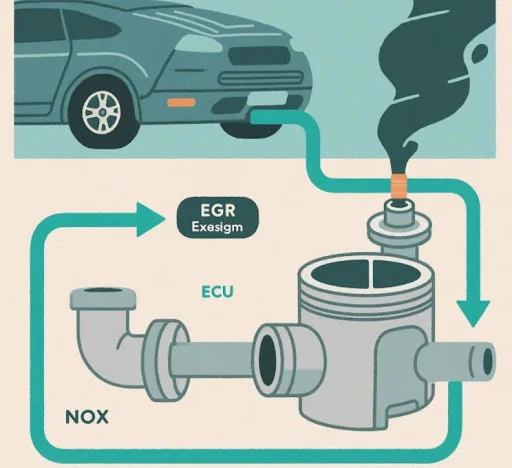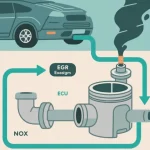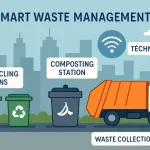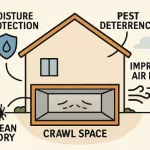Every time you drive your car, you hope your engine runs efficiently and smoothly. Several systems make this complex task possible. One of these systems is the EGR (Exhaust Gas Recirculation System) which reduces and minimizes the emission your car engine produces. It also ensures that your engine operates within the required parameters. Unfortunately, every car component has a car breakdown, and EGR systems are no different. This is why understanding the system can make it easier to make more rational vehicle performance and maintenance decisions.
In this article, we outline the EGR system and its functions, as well as possible reasons for EGR system failures, the advantages of installing an EGR delete kit, and how it can be beneficial for your vehicle.
Understanding EGR Systems
EGR systems are integral systems in vehicles as their primary purpose is to minimize the nitrogen oxide (NOx) emissions. NOx contributes to the deterioration of air quality. This is prevented by EGR systems which reroute some exhaust gases to the combustion chamber.
You may wonder why it is useful to return exhaust gases back to the engine. Cooler exhaust gases reduce the combustion chamber temperature and intensity of the combustion process. That means less fuel is burned and the NOx emissions are reduced. Fuel burned at higher temperatures increases combustion NOx emissions.
This is simply the engine emissions recirculating system. Instead of being released to the atmosphere, the emissions gases are returned to the engine and burned again.
Insightful, practical, and inspiring—check out this related post instantly.
How EGR Systems Work
An EGR System consists of simple parts but performs a vital job. Here’s how:
- EGR Valve: It manages the amount of exhaust gas recirculated back into the engine and opens based on the engine’s requirements. As the engine warms up the exhaust gas reciprocations are more frequent and it closes when the engine cools to keep exhaust gas from re-entering.
- EGR Cooler: Once exhaust gas is delivered back to the engine and passes the EGR system, it is next sent to the EGR Cooler. The EGR Cooler further cools the exhaust gas before it is delivered to the combustion engine, thus assisting in preventing the engine from overheating.
- Pipes and Sensors: Py the exhaust gas is recirculated and a system of Pipes and Sensors is responsible for keeping the recirculated exhaust gas engine system under control.
This reduces the engine temperature. While the EGR System is designed to improve high emission of NOx and fuel economy, it can pose some complex challenges.
What Causes EGR System Failures?
The EGR system can fail for a number of different reasons, just like any other mechanical system. Here are a few of the most common reasons the system might fail:
1. Accumulation of Carbon
The most common problems for the EGR system are the valve, cooler, and system components clogging due to the accumulation of carbon. Because some of the exhaust gas contains carbon particles, some will build up over time. This clogging build up can block the EGR valve which lessens its ability to fully open and close, which can lead to poor performance and increased emissions.
2. EGR Valve Deterioration
As a mechanical EGR component, the valve will be subject to deterioration over time due to normal operational activity. Contributing to poor performance and increased emissions, a valve that either partially or fully opens or closes uncontrollably disrupts the combustion processes.
3. Faulty sensors
Today’s EGR systems depend on sensors to keep track of exhaust gas flow. If they don’t work, the EGR system might underperform, and you will be able to tell because rough idling and stalling will be present, and you will be experiencing reduced fuel economy.
4. Coolant leaks
Rather rarely, the EGR cooler can develop leaks. When this happens, exhaust gas flow stagnates and the EGR system will begin malfunctioning.
5. Failed EGR cooler
If the EGR cooler completely fails, the engine will receive exhaust gases at the wrong temperature which can cause knocking as well as overheating. This can lead to severe and irreversible damage.
The Benefits Of An EGR Delete Kit
If your vehicle’s EGR system is causing problems, or if you’re looking for a way to improve engine performance, an EGR delete kit might be a viable option.These kits will eliminate or bypass the EGR system in order to stop the flow of exhaust gas back into the engine. Merge to sentence end.
People have a variety of reasons why they decide to add an EGR delete kit.
1. Improvement of Engine Performance
With an EGR delete kit configured, the engine eliminates the need to recirculate and deal with the additional functions of exhaust gases. Doing one less task recirculating exhaust gases will result in better and smoother engine performance. Having no EGR will let the engine operate at more consistent temperatures, which is better for overall performance of the engine.
2. Fuel Economy Improvement
Fuel economy improvement has been reported by some vehicle owners after installing the delete kit. When the EGR system is removed, the engine will run more efficiently and will waste less fuel. Due to the cooling effects of exhaust gases, improved fuel economy will mean less fuel is wasted unnecessarily. That said, results on fuel economy will vary by vehicle and the conditions under which it is driven.
3. Decrease in System Maintenance
An EGR system will have issues like damaged coolers, clogged valves, and carbon build up. When EGR delete kits are utilized, the chances of experiencing the aforementioned issues in an EGR system are less likely to happen. This will result in lower overall maintenance costs and repairs.
4. Increased System Reliability
Complex systems have many moving parts that need to function together. Having one less system work reliably and one less possible failure point is simply easier. Removing the EGR system makes this possible. Reliability will improve overall.
Be principled and understand that deactivating the EGR system could bring legal and environmental consequences due to possible excess emissions. Consider the EGR system deactivation and the relevant consequences to the environment and the laws surrounding the environment in your jurisdiction before taking any decision.
In case the decision to deactivate EGR in your vehicle stands. You could search for an EGR delete kit as your solution for the EGR system deactivation. You could search for an EGR delete kit.
Final Remarks
The EGR system in your vehicle deactivates it. The system in the vehicle deactivates the harmful emissions. EGR delete kit installation would build your EGR system functionality and it will help in fuel consumption, and maintenance. Prior to any system modification, consider talking to an experienced vehicle maintenance specialist.
FAQs
1. EGR valve failure consequences?
EGR valve failure would lead to the engine losing power and rough idling. EGR valves also cause emissions to increase and leave the check engine light on.
2. Is it possible to deactivate the EGR system in your vehicle?
With an EGR deactivation kit, you can deactivate the system, as well as understand that your vehicle emissions would legally and environmentally breach laws.
3. Will an EGR delete improve fuel economy?
Usually, fuel economy may improve after an EGR delete, as existing exhaust gases cool down the engine, a process EGR is meant to overcome. Each vehicle is different, however.
4. Is an EGR delete kit legal?
Removing an EGR system is illegal in several regions and does not adhere to environmental standards. Always research local laws regarding EGR delete kits.
5. How do I know if my EGR system is failing?
Some of the common failing EGR system symptoms include lack of engine power, poor idling, engine detonation, and excessive emissions.
The journey doesn’t end here—explore more and discover what you’ve been missing.







